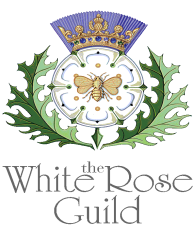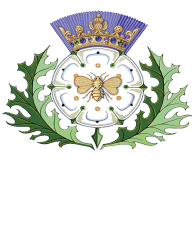by John Sadler
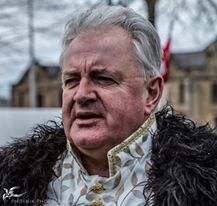 One of the most notable historians of Anglo-Scottish Border conflicts, John Sadler has published a number of books on the subject and is also a successful lecturer, heritage consultant, historical interpreter and battlefield tour guide. ‘From an early age I have been obsessed with the highlands and borders.’ he says, ‘Since then I have travelled, walked, ridden and driven over most of the ground and looked at every battlefield, hillfort, broch, dun and castle.’
One of the most notable historians of Anglo-Scottish Border conflicts, John Sadler has published a number of books on the subject and is also a successful lecturer, heritage consultant, historical interpreter and battlefield tour guide. ‘From an early age I have been obsessed with the highlands and borders.’ he says, ‘Since then I have travelled, walked, ridden and driven over most of the ground and looked at every battlefield, hillfort, broch, dun and castle.’
Sadler regularly lectures at The National Army Museum, Imperial war Museum, RMA Sandhurst, Heriot Watt University, Society of Antiquaries of Newcastle upon Tyne, The Literary and Philosophical Society, Newcastle, Durham University, the DLI Museum & Art Gallery and contributes to many military and historical journals as well. He is a Fellow of the Royal Historical Society, a Fellow of Scotland’s Society of Antiquaries, a graduate Holocaust Fellow of the Imperial War Museum and a member of Equity.
Death March from Dunbar
I beseech you in the bowels of Christ think it possible you may be mistaken. So Oliver Cromwell, not quite yet Lord Protector, implored the Scottish Parliament to abandon their shaky alliance with Charles II. He failed to persuade. The campaign which followed, desultory at the outset, ended with Cromwell’s decisive victory at Dunbar on 3rd September 1650.
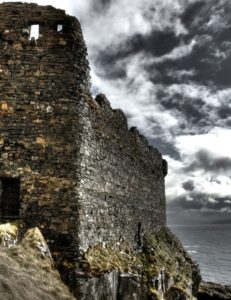 Approximately five thousand men began a forced march from the battlefield of Dunbar to Durham, destined for the Southern ports. It took them seven days, without food or medical care and with little water. They were now property; the chattels of a ruthless regime determined to eradicate any possibility of further threat. Hundreds died or were summarily executed on this English trail of tears.
Approximately five thousand men began a forced march from the battlefield of Dunbar to Durham, destined for the Southern ports. It took them seven days, without food or medical care and with little water. They were now property; the chattels of a ruthless regime determined to eradicate any possibility of further threat. Hundreds died or were summarily executed on this English trail of tears.
Those who survived long enough to reach Durham found no respite, only disease and despair. Exhausted, starving and dreadfully weakened, perhaps another 1,700 died there – most probably from fever and dysentery. For those who survived; hard labour awaited them. They faced forced exile as virtual slaves in a harsh new world across the Atlantic. And what were the prospects for their families left behind to fend for themselves?
Accounts suggest the full tally of Scottish prisoners after the battle was in the region of ten thousand. Almost half of these were non-combatants, camp-followers, tradesmen and the like, non-combatants who were released without sanction. The uniformed captives, – around five thousand, (an exact number cannot be given), were deemed too great a threat and had to be neutralised
The men of Dunbar embarked on a series of forced stages The long convoy, (easily five to six miles in length), was initially shepherded the 20 miles (32 km) to Berwick upon Tweed guarded by a single troop of 25 cavalry/dragoons. Or so the record maintains. This assertion could stand a challenge, it seems impossible that a single troop, even mounted could control so large a contingent.
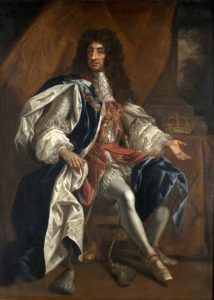 We know most of the captives were quite young, in the 18 – 25 catchment with some even younger. Cromwell saw a commercial opportunity here. Transportation as an indentured servant had long been a means of capitalising on the American colonies’ need for semi-skilled and skilled labour.
We know most of the captives were quite young, in the 18 – 25 catchment with some even younger. Cromwell saw a commercial opportunity here. Transportation as an indentured servant had long been a means of capitalising on the American colonies’ need for semi-skilled and skilled labour.
Their initial ordeal ended on 11th September when they were marched over Framwellgate Bridge into Durham and the bare sanctuary of the great Norman cathedral. They had already spent a night in a church – that of St. Nicholas in Newcastle where their disordered bellies had resulted in such fouling the burgesses had been obliged to pay for a major cleaning up operation.
By now many were so weakened that disease spread easily. Of the three and a half thousand counted through the cathedral’s doors nearly half, seventeen hundred, died within a short space of time. Their remains were buried in pits dug on the city’s Palace Green, then open ground as the name would suggest.
Holding such a large number of prisoners would be costly. However, letting them go could prove very dangerous. One week after the battle, the Council of State, England’s governing junta, decided to turn the problem over to the powerful Committee of Safety and informed veteran parliamentarian Sir Arthur Hesilrige, Governor of Newcastle that he could dispose of as many of the Scots as he deemed fit to the coal mines and other industries.
Armed with that authority Hesilrige consigned forty men to work as ‘indentured servants’ (effectively forced labour) in the salt works at Shields. He then sold another forty off as general laborers and set up a trade in linen, twelve of his prisoners becoming weavers. He may have been making use of existing skills. Dental analysis carried out on one of the recently rediscovered bodies showed damage to the teeth consistent with regularly using them to saw thread ends. Heselrige was clearly a strong believer in private enterprise and was not above using his position to build up his personal wealth and then flaunting it!
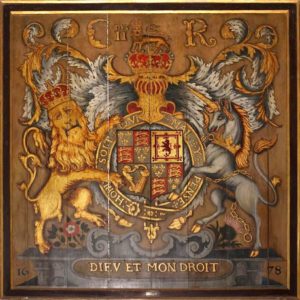 Alongside these developments, the Council of State received several applications from entrepreneurs in the American colonies hungry for cheap labour. On 16th September, negotiations began. The petitioners, John Becx and Joshua Foote, conferred with their partners, the ominously named ‘Undertakers of the Iron Works’ and three days later, Hesilrige was directed to transport a hundred and fifty prisoners of war to New England. The brokers insisted they should only receive strong, healthy specimens, best quality
Alongside these developments, the Council of State received several applications from entrepreneurs in the American colonies hungry for cheap labour. On 16th September, negotiations began. The petitioners, John Becx and Joshua Foote, conferred with their partners, the ominously named ‘Undertakers of the Iron Works’ and three days later, Hesilrige was directed to transport a hundred and fifty prisoners of war to New England. The brokers insisted they should only receive strong, healthy specimens, best quality
In November 2013, during construction of a new café for Durham University’s Palace Green Library, on the City’s UNESCO World Heritage Site, human remains were uncovered by university archaeologists. The jumbled skeletons of what would prove to be twenty-eight individuals were subsequently excavated from two burial pits. It was the start of five years of meticulous investigation. A team of experts from Archaeological Services, Durham University – the University’s commercial archaeology consultancy unit – and academics from Durham’s Archaeology and Earth Sciences departments worked together to excavate and analyze the bones.
From the outset, the Durham team acknowledged the possibility that these might be some the Scots soldiers of 1650. There has long been folklore about these men and what they did in the Cathedral where they were held. In May 2018 the 28 men were reburied in Elvet Hill Road Cemetery in Durham, less than a mile from the spot where they were discovered. There was huge interest in the event, particularly in Scotland where newspapers had covered the Durham discovery in some detail from day one.
Handfuls of Scottish earth were thrown onto the coffins and great care was taken to reflect the traditions of worship of these 17th Century Presbyterians. The service was put together by Durham Cathedral, representatives from the Church of Scotland and the Scottish Episcopal Church. Metrical Psalms from the 1650 Scottish Psalter and a Bible reading from the 1611 King James Version of the bible were included in the service – an expression of the wish of all involved to honour the traditions of the dead.
